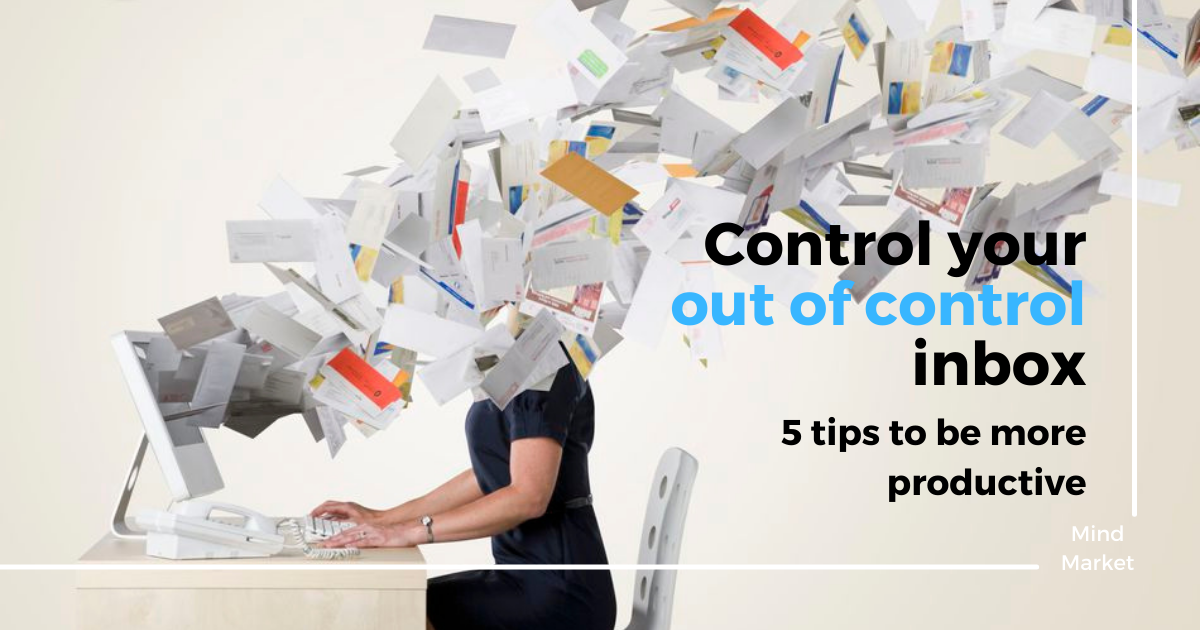Remote working has witnessed exponential growth this year, and with it, email management took a major hit. While the pandemic bears some of the responsibility, let’s not shift the entire blame just yet. For years, managing email has been an area of struggle for leaders and teams as they seek the balance between being productive while controlling the urge to respond to email throughout the day.
When you, and your team members alike, get bogged down in the tunnel that is one’s crowded inbox, productivity can take a hit. So how do you go about optimizing your email practices and maximize productivity?
Try these 5 tips for a start:
1 – Avoid Avoidance (a brilliant psychologist put it this way).
Just like it says, avoid avoidance. The ability to resolve conflict swiftly and for the overall wellbeing of the team is a chief indicator of healthy and resilient work culture. Contrastively, misconstruing conflict as inherently unhealthy or unacceptable is a fundamental trigger for stressors and dysfunction in any business.
Are you or your team feeling overloaded? Emotions, not email, might be the real problem.
Inbox overactivity surrounding any conflict is an indicator of avoidance in the retro form.
Opt for a face-to-face dialogue when the back and forth emails take a spin. Hiding behind email is nothing short of poor conflict management. Rule of thumb: If it takes more than two replies, or if it’s a dissertation, pick up the phone.
Uncover the avoidance behind the unnecessary emails, and you might just solve your biggest email problem.
2 – Schedule it.
Designate a specific time during the day for email. Avoid reading emails at every opportunity you get. Instead, turn off email notifications and focus on what truly matters. Don’t let the urgent silence be what’s truly important.
Urgent tasks scream. The important ones whisper. Listen to the whisper.
3 – There’s an app for that!
The number of to-do apps out there are plenty. Avoid making your email do something it wasn’t designed to do by morphing it into a never-ending to-do list. Things won’t get done, and the tasks will keep piling up, along with the need to respond to all those pending emails.
And don’t let others turn your email into a to-do list for you. Use a planner, a notebook, or create your worksheet. Take care of the email on the spot and jot down your tasks elsewhere. Make sure your system works for you, otherwise you’ll be working for it.
4 – File or delete it, because you will not “read it later.”
Filter your emails based on what serves your productivity. If it’s actually meaningful, you’ll read it right then and there. If you’re tempted to keep it around so you read it later, file it or archive it. Avoid piling your inbox with “later” emails. Let’s face it, the “later” may not be vast enough for that growing stockpile. Delete it, clear it, and if it’s important enough to keep around, file it on the spot. Relieve your inbox on the spot. Handle it the first time around.
5 – Unsubscribe!
Finding yourself overwhelmed with all the professional (or self) development newsletters you’re getting? Battling the guilt of never getting around to reading them, or overwhelmed by the sheer volume of them in your inbox? Choose your favorite newsletter and unsubscribe from the noise. Because that’s all it is, noise, keeping you from being your most productive self – don’t let the irony of that elude you. Hit the unsubscribe, or mark it as spam so you don’t see it anymore.
When in doubt, ask an expert. Find someone that seems to have a good handle on email. Learn what works and improve the quality of your work. Seek coaching if necessary. Improve your life. Don’t let email stand between you and your quality time. Email overwhelm is for real. Put that urgency to rest.

